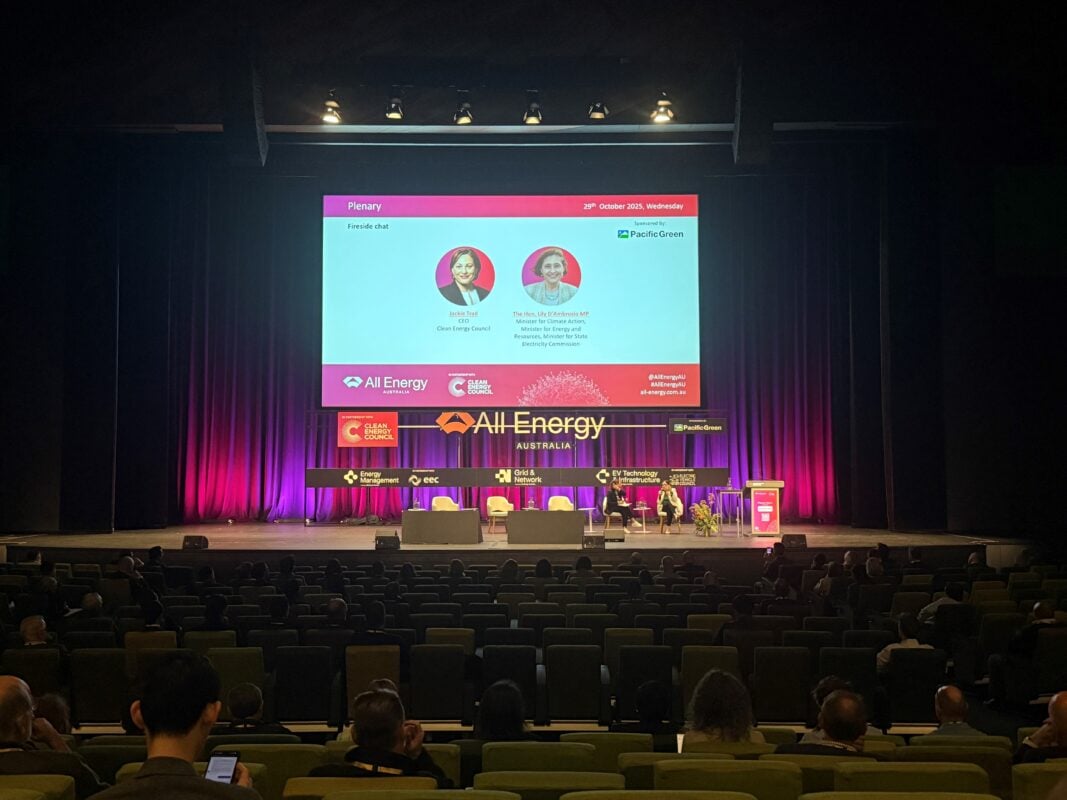Top Stories
Victoria Achieves 20,000 Battery Installations as Federal Program Launches

Victoria’s home battery energy storage programme has successfully facilitated the installation of approximately 20,000 residential energy storage systems, surpassing its initial target of 10,000 units. This achievement was announced by the state’s Climate Action Minister, Lily D’Ambrosio, during her address at the All-Energy Australia 2025 conference. The state programme has now transitioned to the federal government’s Cheaper Home Batteries Program, which is set to continue the momentum in residential energy storage.
D’Ambrosio, who holds the distinction of being Australia’s longest-serving climate change and energy minister, highlighted the significance of this transition. She commended the federal initiative, noting that the strong application numbers reflect a substantial demand for such programmes. “I really do commend the Commonwealth government for this initiative, because you can see that people are hungry for it,” she stated.
The minister elaborated on the sequential adoption of residential energy technology, emphasizing the necessity of solar photovoltaic (PV) systems as a foundational element for the subsequent growth of battery storage. “The role of solar PV has been really important for people, and the uptake of solar PV in the home has had to be the forerunner,” D’Ambrosio explained. As more households adopt solar energy, the desire for enhanced control over energy usage has become increasingly evident.
Energy security has emerged as a critical driver for consumer adoption of battery systems, especially in light of climate change, which has led to an increase in disruptive weather events. D’Ambrosio pointed out, “We’re seeing with climate change, there are so many more storm events, so many more massive wind events, so many bushfires.” These factors have prompted individuals to seek battery systems as a means of ensuring a reliable energy supply during significant outages.
The technology addresses multiple consumer concerns by providing enhanced control over energy management. D’Ambrosio noted that battery storage systems allow users to manage when and how they consume energy, ultimately minimizing costs. She described home battery technology as “the next technology piece that addresses so many different consumer concerns.”
Victoria’s broader renewable energy transformation sets the stage for the success of the battery storage programme. In the most recent financial year, the state achieved 42.4% of its electricity generation from renewable sources, a remarkable increase from less than 11% when the current government took office. “It’s been a massive, massive jump,” she remarked.
The minister outlined Victoria’s approach to the energy transition, characterizing it as requiring both speed and endurance. “This transition is a long transition, but it’s a sprint every day, and will be for years to come,” she explained. The state’s renewable energy strategy includes legislative targets that D’Ambrosio believes position Victoria as a leader in setting ambitious yet achievable goals.
As the state transitions from its home battery storage programme to federal support, D’Ambrosio noted that Victoria had met its objectives prior to this shift. “When we did roll out the home batteries programme, we aimed for 10,000. We ended up supporting the installation of about 20,000 of those,” she stated. The minister expressed satisfaction with the federal programme taking over, indicating a smooth transition in responsibility.
Despite the change, the Victorian government remains committed to exploring further optimization opportunities for battery support. D’Ambrosio stated, “We continue to look for ways to optimise further the support around that for Victorians,” suggesting that state-level initiatives may continue to complement federal efforts.
As Victoria advances in its renewable energy journey, the success of its home battery programme illustrates the growing importance of energy storage solutions in meeting consumer needs and addressing climate challenges. The ongoing collaboration between state and federal initiatives aims to enhance energy security and promote sustainable practices across Australia.
-

 Health3 months ago
Health3 months agoNeurologist Warns Excessive Use of Supplements Can Harm Brain
-

 Health4 months ago
Health4 months agoFiona Phillips’ Husband Shares Heartfelt Update on Her Alzheimer’s Journey
-

 Science2 months ago
Science2 months agoBrian Cox Addresses Claims of Alien Probe in 3I/ATLAS Discovery
-

 Science2 months ago
Science2 months agoNASA Investigates Unusual Comet 3I/ATLAS; New Findings Emerge
-

 Science2 months ago
Science2 months agoScientists Examine 3I/ATLAS: Alien Artifact or Cosmic Oddity?
-

 Entertainment2 months ago
Entertainment2 months agoLewis Cope Addresses Accusations of Dance Training Advantage
-

 Entertainment5 months ago
Entertainment5 months agoKerry Katona Discusses Future Baby Plans and Brian McFadden’s Wedding
-

 Science2 months ago
Science2 months agoNASA Investigates Speedy Object 3I/ATLAS, Sparking Speculation
-

 Entertainment5 months ago
Entertainment5 months agoEmmerdale Faces Tension as Dylan and April’s Lives Hang in the Balance
-

 World3 months ago
World3 months agoCole Palmer’s Cryptic Message to Kobbie Mainoo Following Loan Talks
-

 Entertainment2 days ago
Entertainment2 days agoAndrew Pierce Confirms Departure from ITV’s Good Morning Britain
-

 World4 weeks ago
World4 weeks agoBailey and Rebecca Announce Heartbreaking Split After MAFS Reunion









